What Is a Marketing Strategy?
A marketing strategy is a roadmap to help you find your target customers and figure out the best ways to reach them.
As you’ll discover in the marketing strategy examples below, you can use different types of marketing strategies based on your business goals and target audience.
Some focus on boosting brand awareness. Others aim to generate leads or drive sales.
In any case, a marketing strategy covers market research, positioning, and the marketing mix (including product, price, place, and promotion).
Why You Need a Marketing Strategy
A solid marketing strategy provides a clear direction and a well-organized plan. Ensuring all your marketing efforts are in line with business objectives.
It also helps you figure out who your target audience is and get a grasp on what they want, like, and do. Which is very important for creating marketing campaigns that actually work.
Lastly, it gives you a framework to evaluate performance and make necessary adjustments to boost ROI.
But:
Before coming up with a marketing strategy, it’s important to take a close look at your competitors and understand the market dynamics.
You’ve got the Market Explorer tool at your fingertips for that.
If you already have a list of competitor URLs, enter them into the “Competitors” bar. Then choose a location, name your list, and click “Create and analyze.”
Alternatively, click “Find Competitors” and enter the domain you want to analyze. Choose your location and click “Research a market.”

The tool will provide a comprehensive overview of your market. Including main players, market shares, traffic shares, and more.
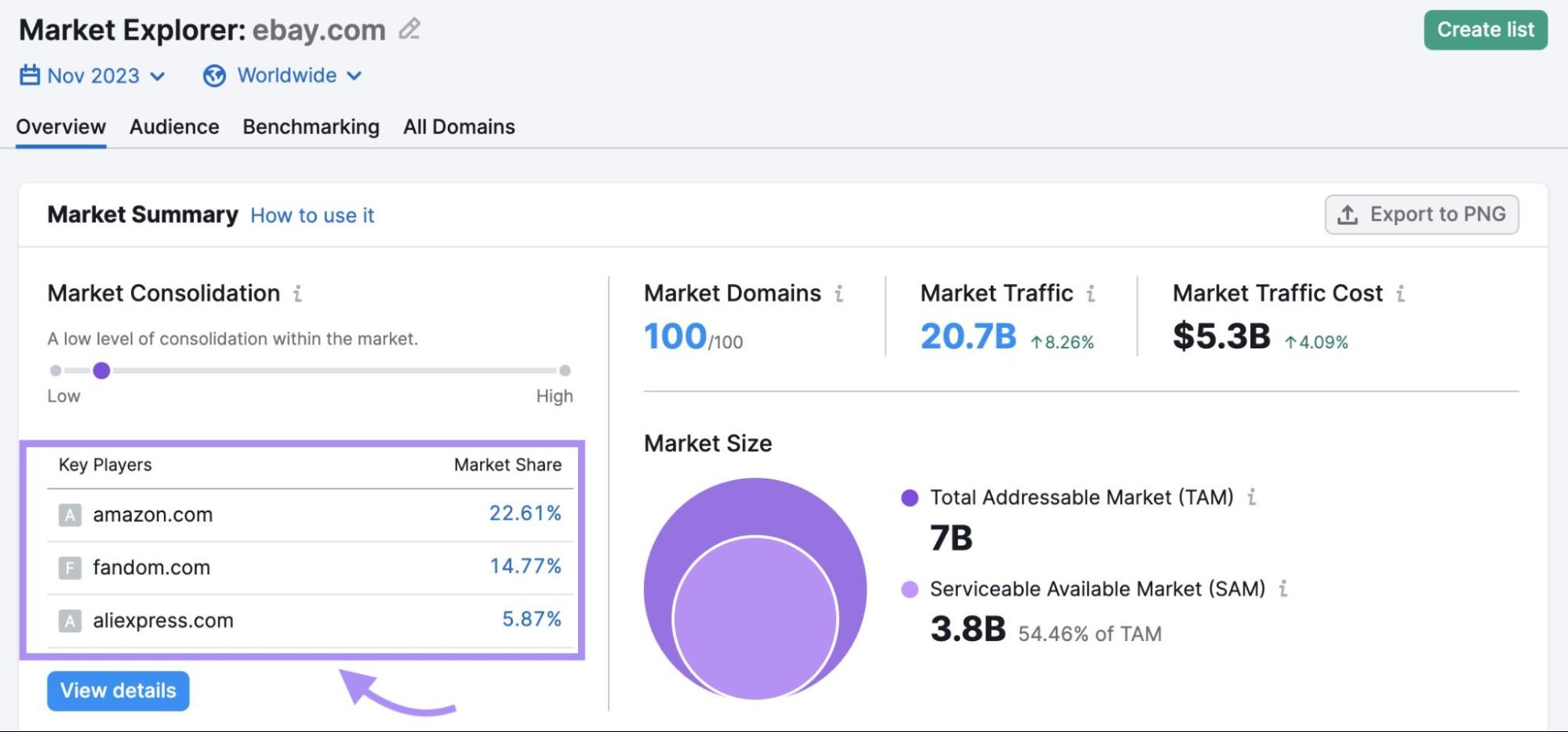
You can dive deeper into top players’ strategies by analyzing their online presence, traffic acquisition, audience overlap, and audience interests.
You can use these insights to shape your marketing strategy, from positioning to product development.
Further reading: Marketing Strategy 101: A 7-Step Plan for Beginners
8 Inspiring Marketing Strategy Examples
Here are examples of marketing strategies from brands in different industries for you to learn from and apply to your business:
1. MaisonCléo: Content & Influencer Marketing
MaisonCléo has positioned itself as a brand that values transparency and quality, championing slow fashion and hand-made designs.
They frequently share behind-the-scenes looks at their production process on social media, as you can see on their Instagram:

Sharing behind-the-scenes content can build trust and authenticity, and it strengthens the bond between a brand and its audience.
By showcasing hard work, dedication, and real processes, it humanizes the brand and fosters loyalty. And sets it apart from competitors.
MaisonCléo uses a combination of content marketing and influencer marketing strategies.
They often share engaging content on social media, offering glimpses into their production process and the story behind each piece. And popular influencers wear their clothing, which boosts their visibility and increases desirability.
They also use “drop-style” campaigns, where they release small quantities of their handmade pieces at specific times. This creates an air of exclusivity.
MaisonCléo’s marketing strategy demonstrates the power of combining solid, respectable principles (slow fashion and authenticity) with elements of exclusivity and influencer marketing.
By creating a strong brand identity and using strategic marketing techniques, they’ve built a loyal customer base who appreciate their commitment to quality and uniqueness.
2. On Running: Multichannel Marketing
On Running’s marketing strategy centers on innovation, sustainability, and a performance lifestyle. They emphasize unique technology and design in their products. While highlighting their commitment to sustainability.
Their Cyclon service (a fully recyclable running shoe subscription service) is just one example of this approach:
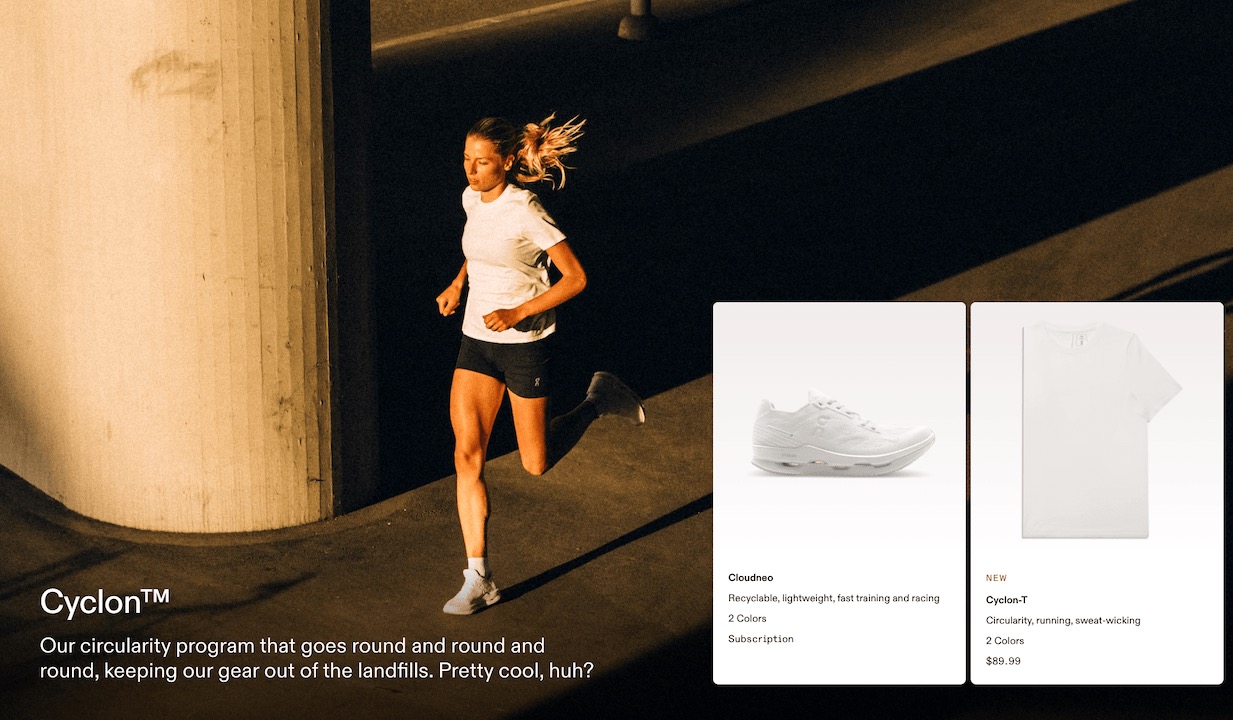
This service is a great marketing strategy that demonstrates On Running’s dedication to sustainability.
With fully recyclable running shoes and a distinctive subscription model, they engage customers and build brand loyalty.
This eco-friendly approach effectively combines sustainability, innovation, and customer engagement.
On Running uses a multichannel marketing strategy. It includes social media marketing, content marketing, influencer marketing, and direct-to-consumer marketing.
Their content marketing shines through OFF Magazine, where they share athlete stories, innovations, and cultural pieces. Reinforcing their performance lifestyle brand.
With over 1 million followers, their social media focus is Instagram. They also collaborate with athletes to showcase products. And they sell directly to consumers on their website.
On Running’s marketing strategy showcases the power of a lifestyle-focused brand identity and multichannel approach. By highlighting distinctive product features and commitments, they create a compelling brand image that connects with their target audience.
Mindvalley builds a strong community around their brand by creating engaging educational content that brings real value to their audience (e.g., personal transformations).
Their YouTube videos are a good example of their educational content:
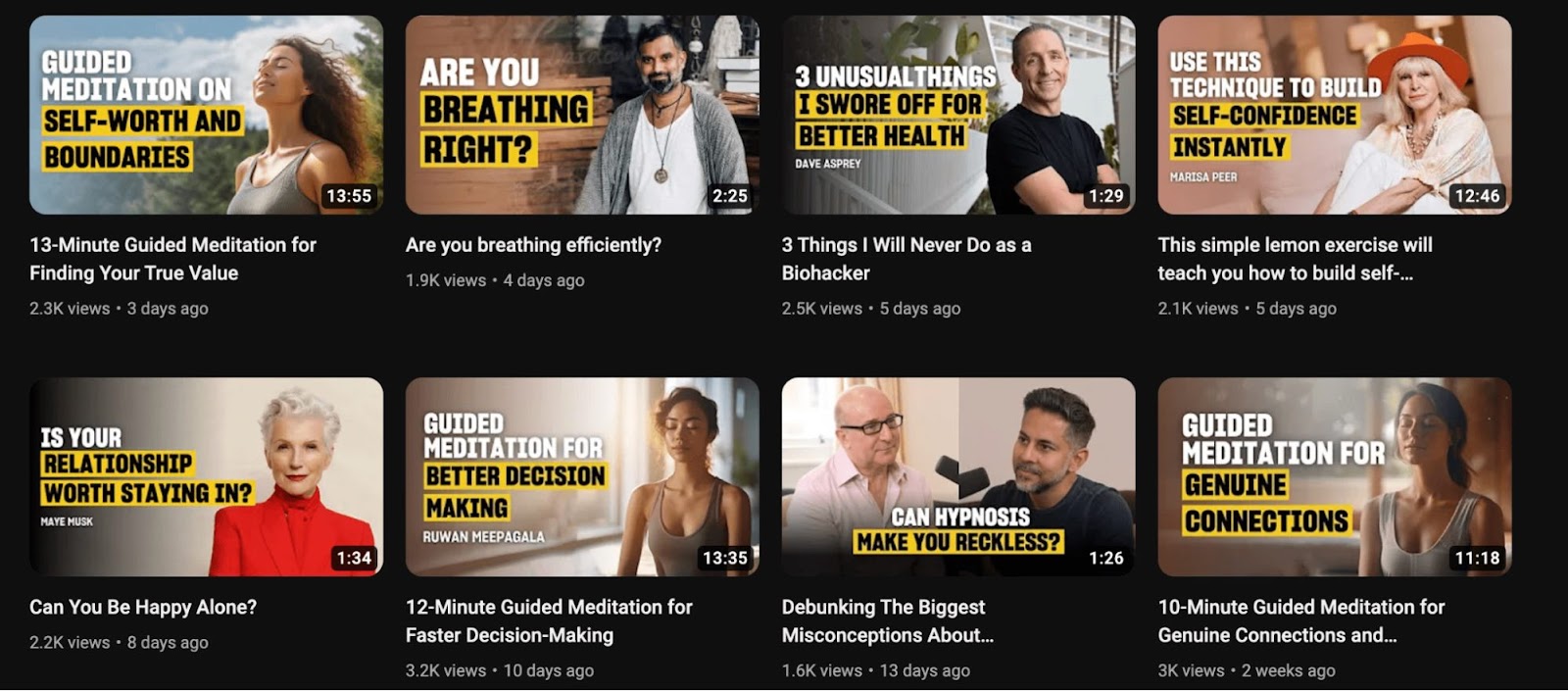
They provide valuable, high-quality content that deeply resonates with their audience.
By addressing self-improvement and personal transformation topics, they offer real solutions to viewers’ needs. Building trust, loyalty, and ultimately converting them into customers.
And the shareability and longevity of YouTube videos make them a powerful tool for reaching and engaging a wider audience over time.
Mindvalley primarily uses content marketing on their website and social media platforms (particularly YouTube). And they combine it with advanced ad targeting strategies to increase their number of quality leads.
It’s a content marketing strategy example that really shows how effective it can be when done right. By prioritizing valuable (and SEO-optimized) content and building a strong community, they’ve attracted millions of subscribers.
4. Shield: Personal Branding & Content Marketing
Shield, a LinkedIn analytics platform, takes a marketing approach that revolves around thought leadership and empowering users with actionable insights.
Here’s an example of what founder Andreas Jonsson shares on his LinkedIn profile:
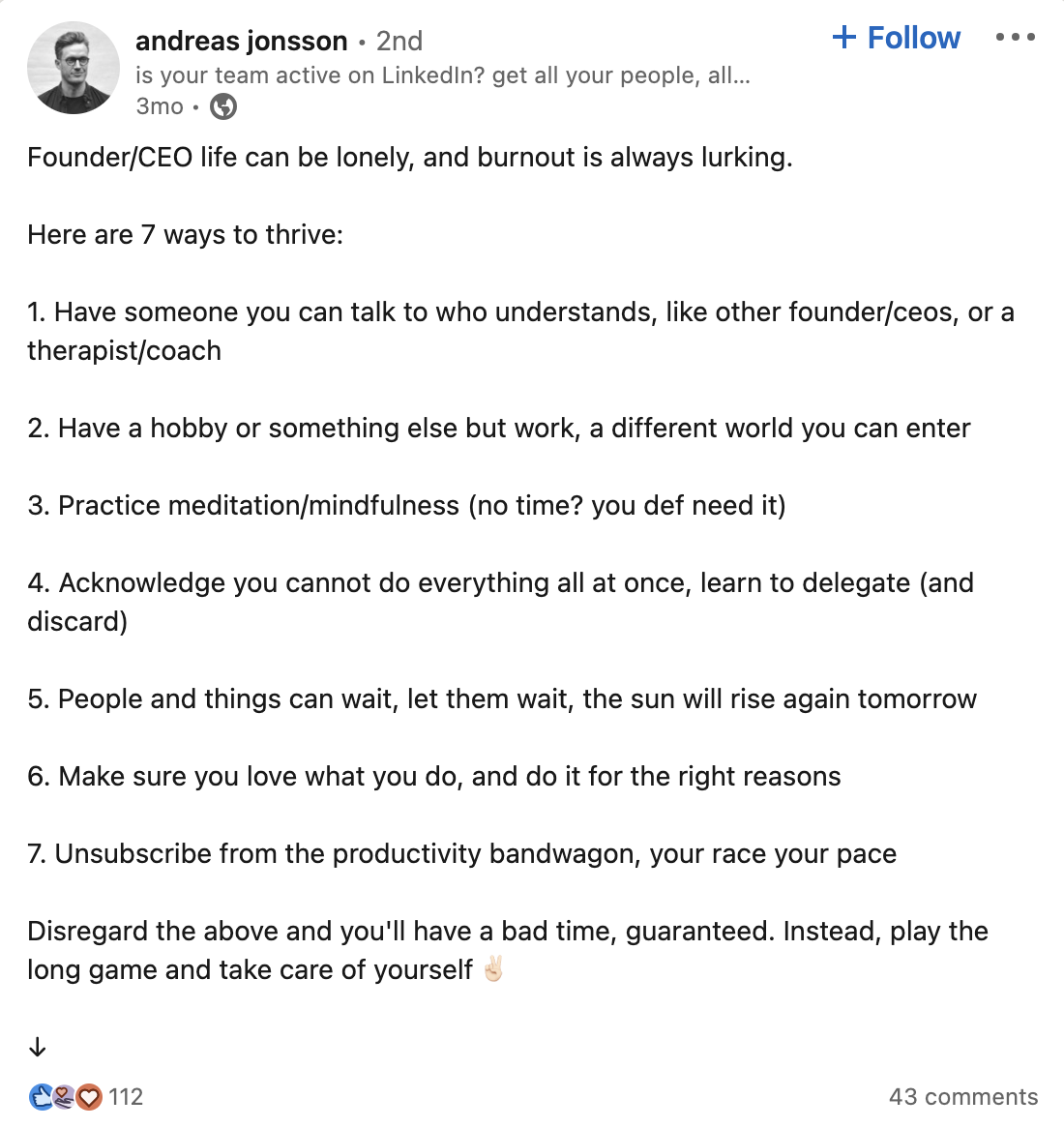
By sharing personal insights and experiences, he humanizes his brand, fostering a deeper connection with his audience. This approach builds trust and authenticity, crucial in today’s customer-centric marketing landscape.
Additionally, as a LinkedIn analytics platform founder, his thought leadership content positions him as an industry expert. Attracting consumers seeking solutions.
Finally, this content encourages engagement, boosting visibility for him and his brand on the platform.
Shield combines personal branding with content marketing. With a focus on LinkedIn as their main channel.
This strategy helps expand the reach of the brand, engage with the target audience, and establish thought leadership in the industry.
5. Graubünden Tourism: Immersive Experiences with Local Marketing
Graubünden Tourism’s marketing strategy focuses on showing the unique and immersive experiences the Swiss canton of Graubünden offers.
For example, their campaign “The Great Escape” cleverly used out-of-home advertising and real-time technology:

The clever campaign merged the real and digital worlds, inviting Zurich station-goers on spontaneous train trips to Graubünden.
This immersive experience goes beyond just telling people about the region’s attractions. It allows people to experience the adventure firsthand. The hands-on approach grabs attention, sparks curiosity, and creates a memorable connection with the brand.
By showing rather than telling, this strategy generates immediate interest and encourages word-of-mouth marketing.
Graubünden Tourism primarily uses content marketing combined with local marketing. They use eye-catching visuals and compelling stories to promote local attractions and activities. And they primarily use digital platforms like social media, email newsletters, and their official website.
Their marketing strategy highlights the importance of creating memorable and immersive experiences in destination marketing. Because leveraging these elements helps create a strong emotional connection with potential visitors.
6. Travelpayouts: Affiliate Marketing & Digital Platforms
Travelpayouts, a travel affiliate program, has developed a marketing strategy centered on partnerships. They enable travel bloggers and content creators to earn money by recommending trusted travel brands to their followers.
Their guide to monetizing travel content is a great example of this strategy:
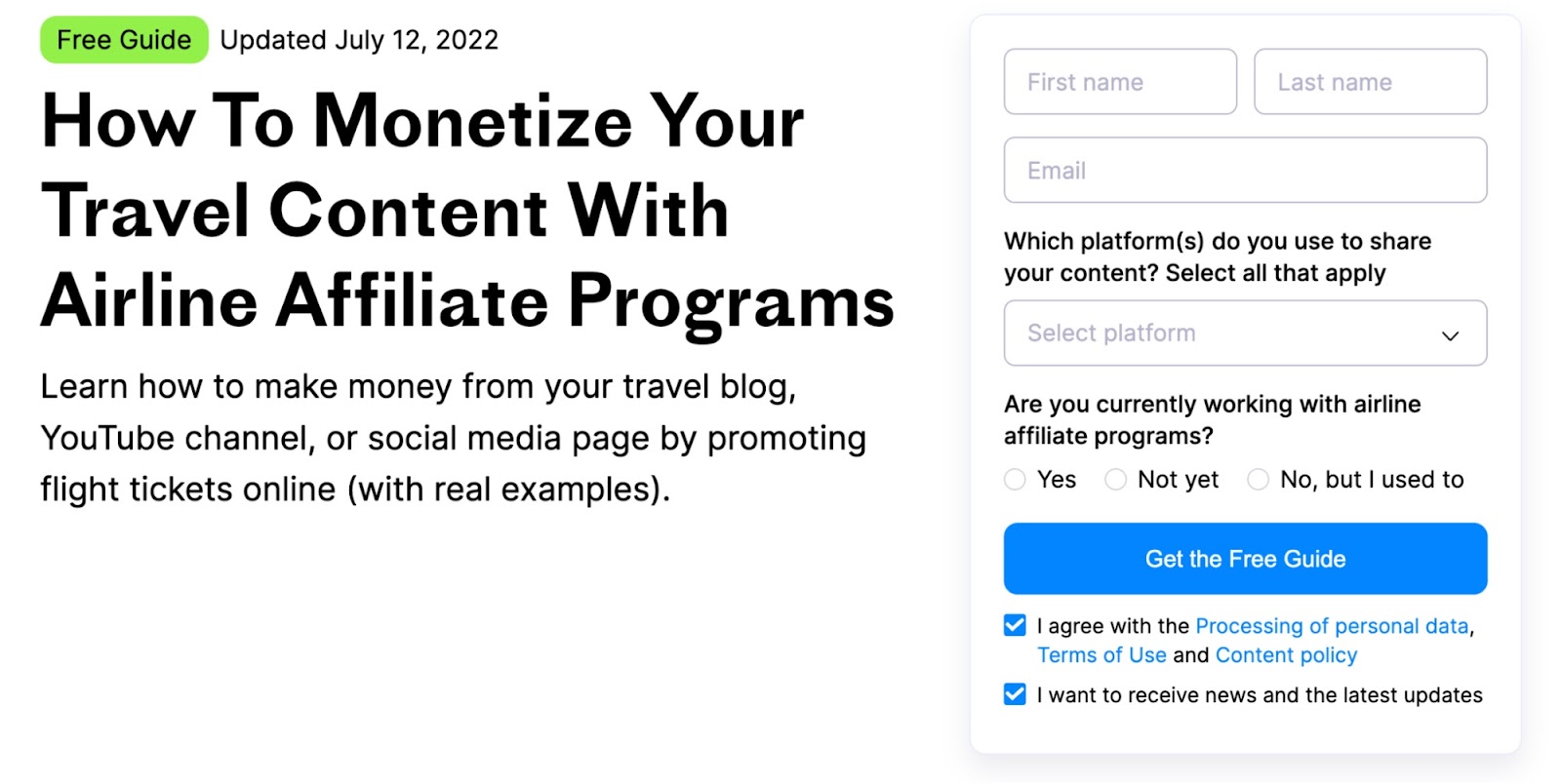
It offers valuable information that benefits travel bloggers and content creators. And by providing expert advice, it establishes Travelpayouts as an authoritative voice. Building trust and credibility.
This guide also encourages users to join and use their affiliate program. Subtly promoting their business while addressing their audience’s needs.
Travelpayouts primarily uses an affiliate marketing strategy. But they also use blog posts, social media, and email marketing.
They build relationships with content creators and offer them the opportunity to earn commissions by promoting travel brands to their audiences.
They give access to affiliate programs from top brands like Tripadvisor, Booking.com, and GetYourGuide. This allows their partners to monetize their content effectively.
By supporting and equipping affiliates with the right connections, they’ve built strong relationships. And effectively promoted various travel brands. This approach benefits Travelpayouts, their partners, and the travel brands they promote.
7. Cupsly: Storytelling
Cupsly’s marketing strategy is centered around storytelling. They share their startup journey and build their product in public.
Here’s an example of how founder Niall Cleaver shares the story behind the idea for Cupsly:

By sharing their story, Cupsly offers customers an experience and journey that fosters authenticity, transparency, and emotional connection.
This enhances brand awareness, trust, and loyalty. While differentiating itself in a crowded market.
Through storytelling, Cupsly creates a unique brand identity that resonates with its audience.
Both founders concentrate on LinkedIn. They leverage high-quality brand visuals, personal narratives, and compelling storytelling in their campaigns, creative direction, and overall brand strategy.
The founders have already accumulated more than 70K LinkedIn followers (combined). Even before their official 2024 launch.
Red Bull’s marketing focuses on high energy and extreme sports. The tagline, “Red Bull gives you wings,” promotes an adventurous and exciting lifestyle. Suggesting that drinking Red Bull enables you to also live this way.
A notable example of this strategy is the Red Bull Stratos project:
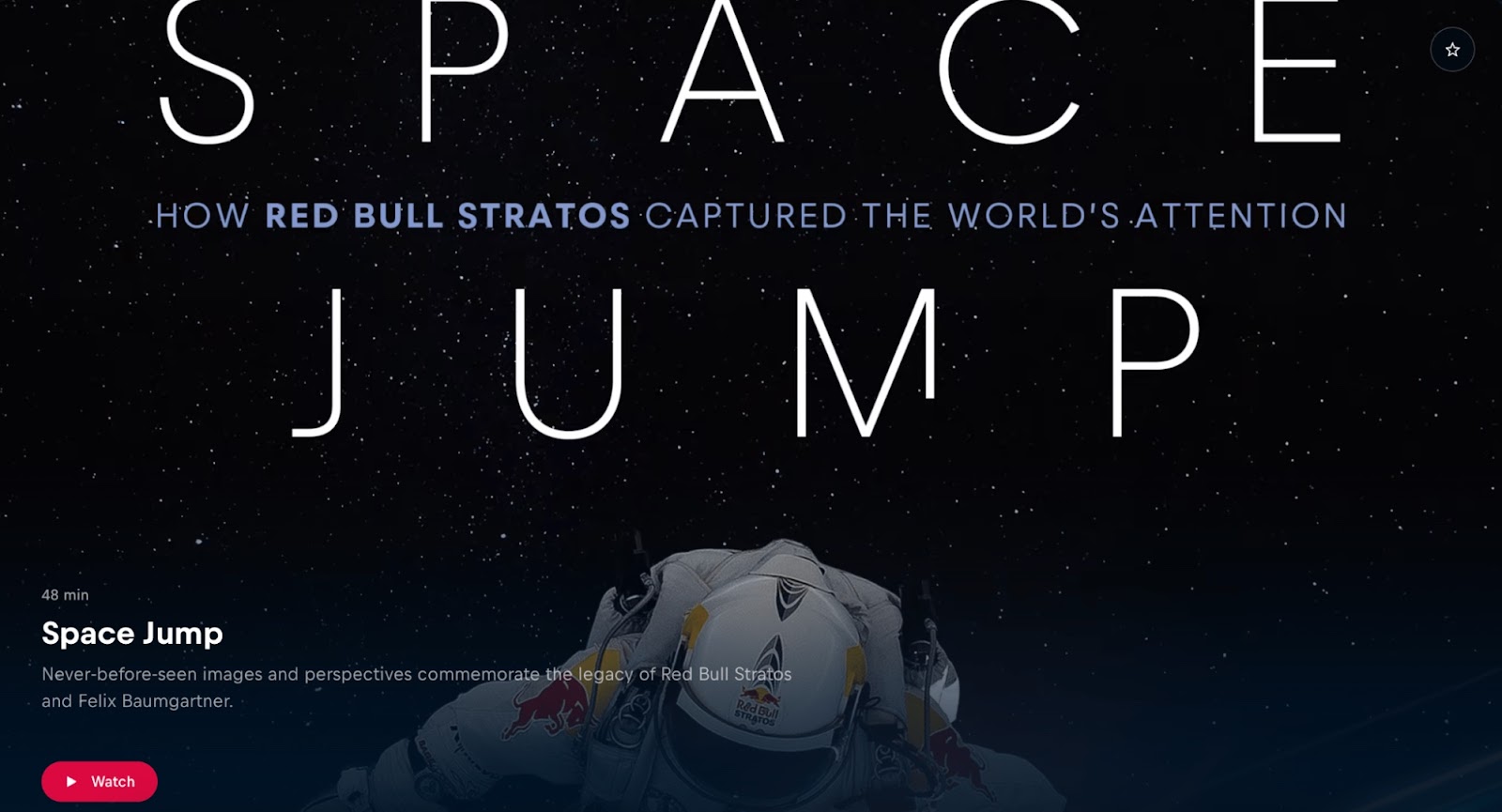
It embodied Red Bull’s brand identity of high energy and daring adventure. By sponsoring a high-profile event like a skydive from the stratosphere, Red Bull reinforced its brand image. Making it more memorable in the minds of the consumers.
It also generated tremendous media coverage and social media buzz. Earning Red Bull significant attention and exposure. This kind of publicity is invaluable and far-reaching.
Lastly, the project created engaging content that Red Bull could share across multiple platforms—from live broadcasts of the jump to follow-up videos and behind-the-scenes footage.
All of this content helped keep Red Bull’s audience engaged, intrigued, and invested in the brand’s activities.
Red Bull uses a combination of traditional media, content, influencer, and event marketing strategies.
They engage their audience through captivating digital experiences on platforms like social media, their website, and TV. They also collaborate with influencers, particularly extreme sports athletes, to connect with their target audience.
On top of that, they organize and sponsor global sports, music, and cultural events as part of their wider promotional strategy.
Red Bull’s marketing strategy highlights the importance of consistent brand messaging and alignment with the business’s values. By focusing on a specific lifestyle and consistently reinforcing this image across all channels, Red Bull has carved out a unique position in the otherwise highly competitive beverage industry.
6 Types of Marketing Strategies
With these examples in mind, you can leverage various different types of marketing strategies to create an effective one for your own business:
1. Content Marketing Strategy
A content marketing strategy is a roadmap that helps you create, deliver, and manage valuable and relevant content. To connect with and keep your audience engaged.
This strategy leverages different types of content, like blog posts, infographics, videos, podcasts, and social media posts.
Nike’s Breaking2 campaign (attempt to break the two-hour marathon barrier) is a great example of this:

The sportswear giant effectively used various content formats, including live streaming and documentaries, to showcase their brand ethos and product innovation.
Content marketing can help build trust and long-term relationships with your audience. By creating and sharing valuable content that resonates with your audience’s needs, you show that you understand them and can provide solutions to their problems.
You can use Semrush’s Topic Research tool to identify trending topics, understand your audience’s interests, and create relevant content.
Simply head to the Topic Research tool (you’ll find it under “Content Marketing” on the left-hand side) and enter the topic you want to explore for content creation. This could be a keyword or a phrase that’s relevant to your business or industry.
You can also enter a specific domain if you want to see what content they have about your chosen topic.
Then, hit the “Get content ideas” button.
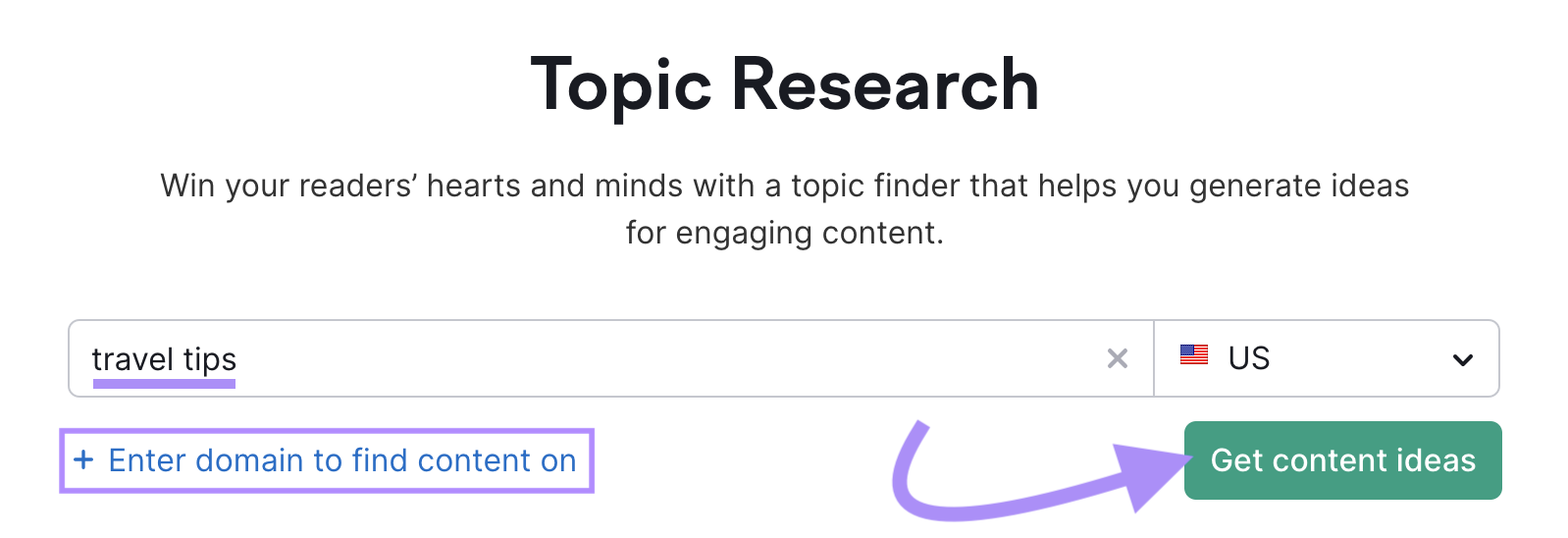
This will generate a list of related subtopics. Each one is presented as a card that you can click on to see things like search volume, headlines, and related questions:
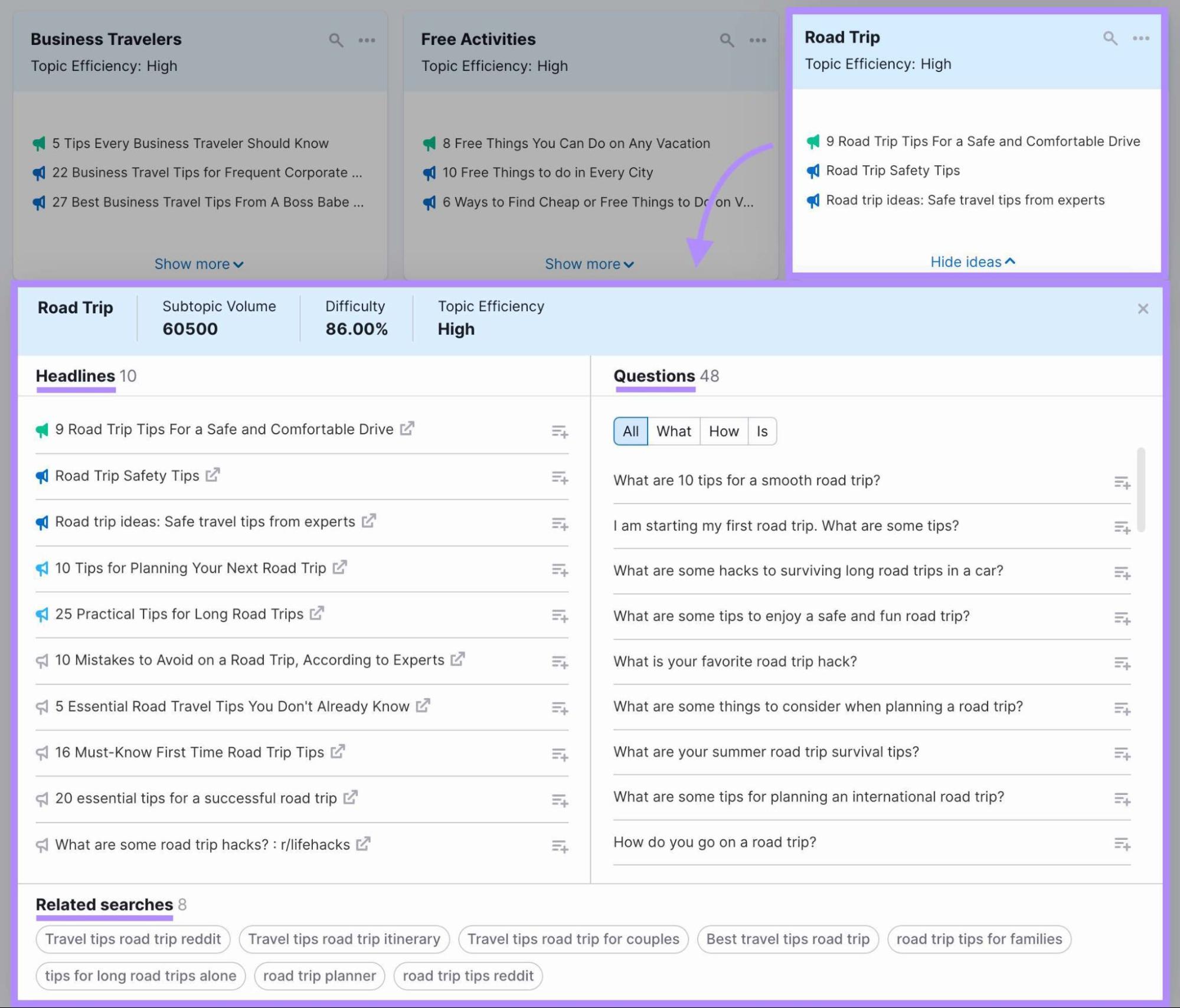
Review the results and find topics that match your content goals. Take into account the search volume, difficulty, and user questions to decide which topics to focus on.
2. Local Marketing Strategy
A local marketing strategy targets consumers in a specific geographic area. Usually within a certain radius of your business.
The Starbucks Reserve Roastery in Seattle is a great example of local marketing.

This store showcases the coffee brewing process, offers exclusive blends, and creates an immersive experience. All capitalizing on Seattle’s coffee culture and going beyond simply being a coffee shop.
Local marketing strategies can include hosting events, participating in community activities, or sponsoring local sports teams.
By tailoring your marketing efforts to a local audience, you can create more personalized and relevant messages. And they can lead to higher engagement rates.
If you want to leverage local marketing, you can use the Listing Management tool.
It helps you to:
- Easily edit information across directories for consistent and accurate business data
- Maintain visibility by managing duplicates, monitoring reviews, and acting on user suggestions
- Track performance with search and display reports
- Follow recommendations for improved local search results
3. Affiliate Marketing Strategy
An affiliate marketing strategy involves partnering with marketers to promote your products or services. In exchange, you pay affiliates a commission for each sale or lead they generate.
The Amazon Associates Program is an excellent example of successful affiliate marketing.
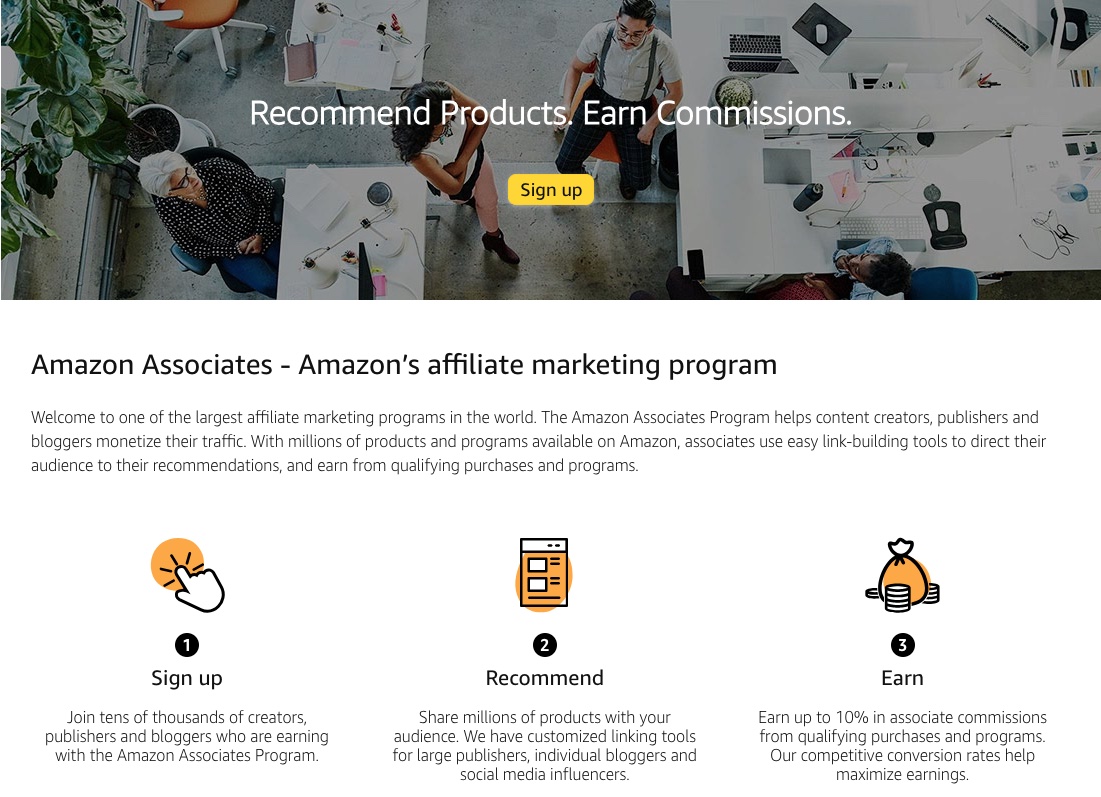
Influencers, bloggers, and website owners can earn up to 10% commissions for every purchase made through their referral links. Driving significant sales for Amazon.
Affiliate marketing can help you reach new audiences. Because you can leverage the networks and platforms of the affiliate marketers you partner up with.
Here are some tools to help you manage affiliate partnerships:
These platforms can help you optimize your campaigns, track conversions, and manage payouts to your affiliates.
4. Social Media Marketing Strategy
A social media marketing strategy involves using social media platforms to promote your products or services and engage with your audience.
Take, for instance, Airbnb. They use storytelling on their Instagram account.
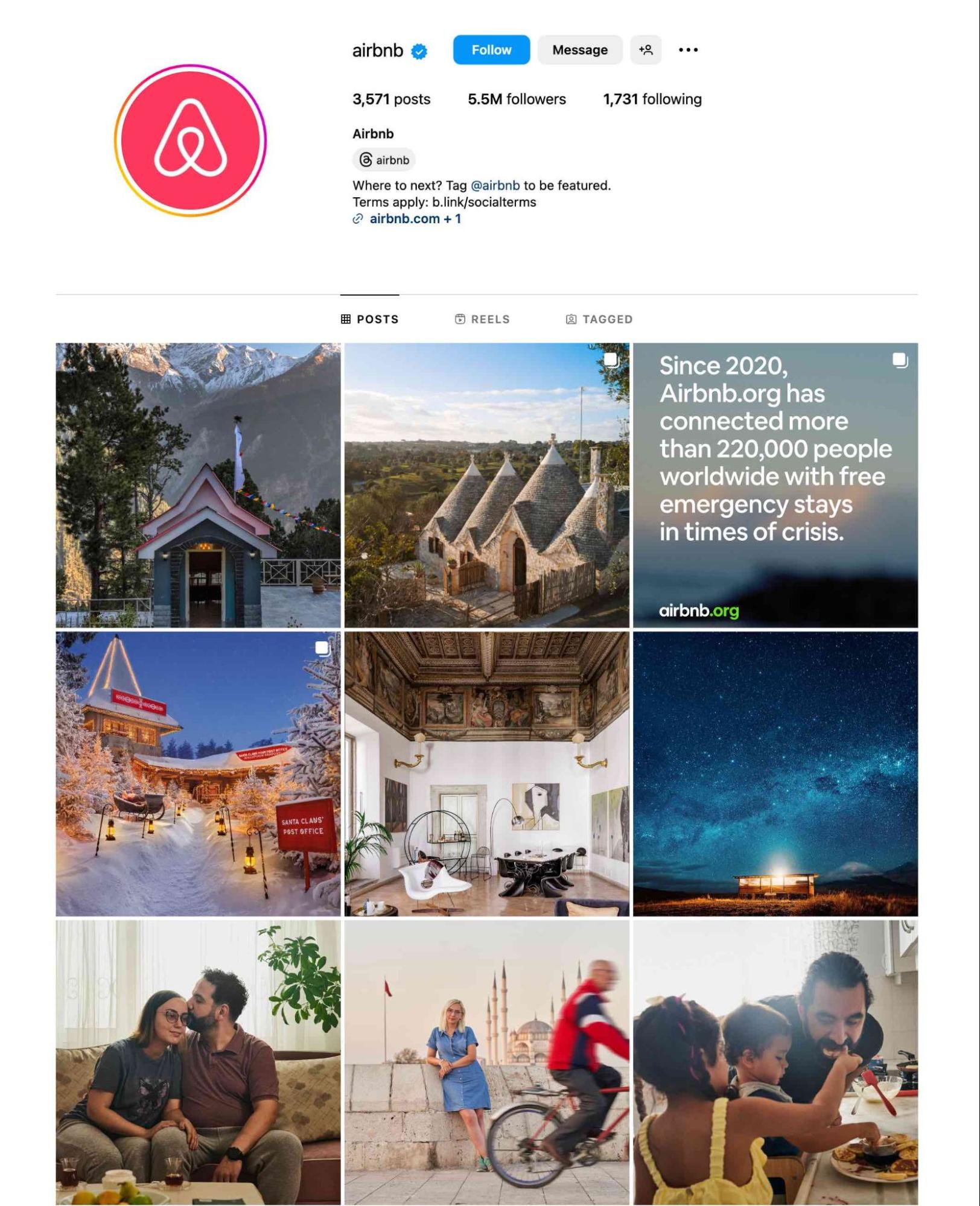
They showcase user experiences and unique rentals. Thereby connecting with their audience on a personal level and promoting their service in an authentic, non-intrusive way.
Social media platforms have massive reach and engagement, connecting billions of users worldwide. They offer incredible opportunities to connect with diverse audiences. And provide targeted advertising to reach the right demographics.
If you’re keen to dig deeper into the world of social media marketing, we’ve got you covered with a comprehensive social media marketing crash course designed just for this dynamic field.
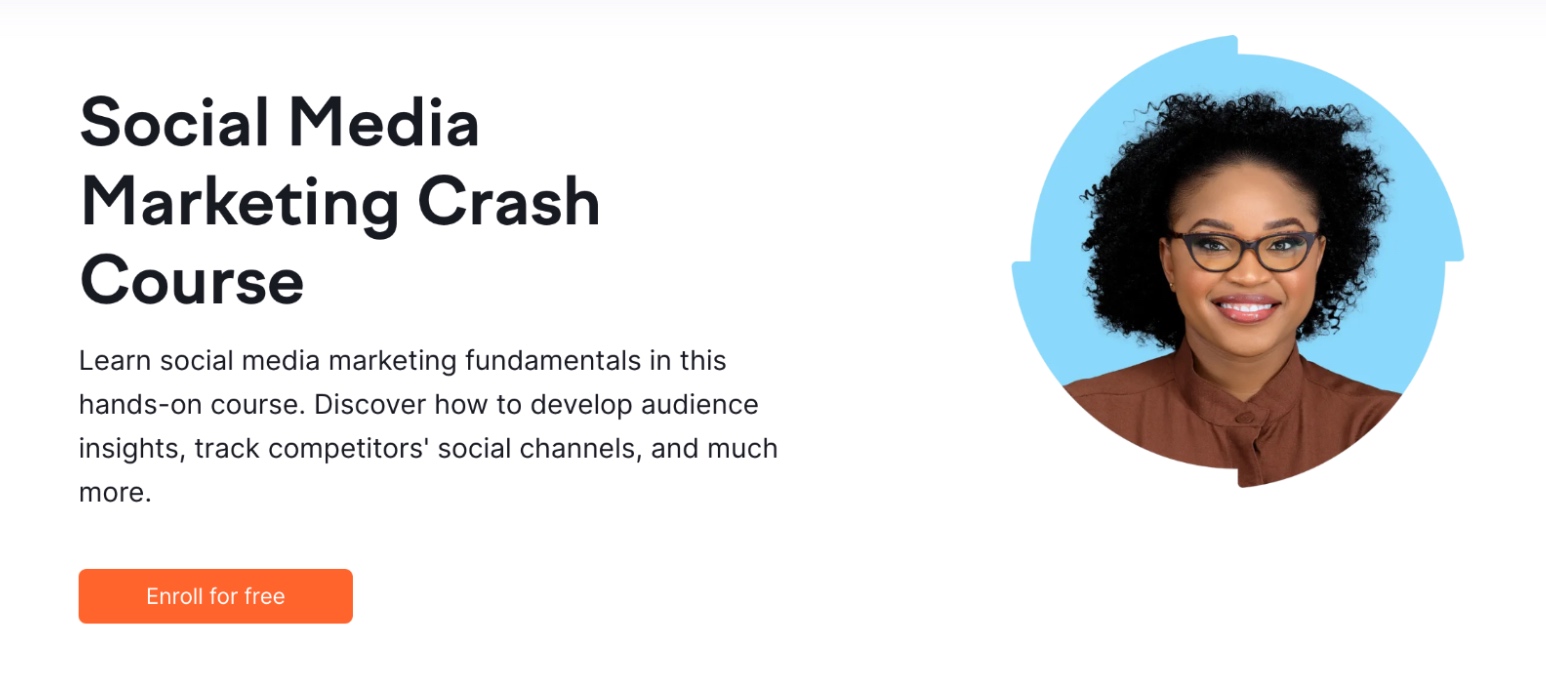
5. SEO strategy
A search engine optimization (SEO) strategy focuses on improving your website’s visibility and rankings insearch engine results. This involves optimizing your website’s content, user experience, and technical aspects to align with search engine algorithms.
Take a look at HubSpot, a SaaS company that has mastered the art of SEO. For instance, they consistently create valuable, searchable content that helps them rank high in search results.

An SEO marketing strategy can enhance your website’s visibility and attract organic traffic. This can lead to more potential customers, without spending money on paid ads.
You can use the Semrush Keyword Magic Tool to research and identify relevant keywords for your SEO strategy. It provides keyword suggestions, search volumes, and competitive metrics to help you choose the right keywords.
Just type in the primary keyword related to your business or industry in the search box. This keyword should represent the core of what your business offers. Choose a location, then click “Search.”

The tool will generate a list of related keywords and their respective metrics.
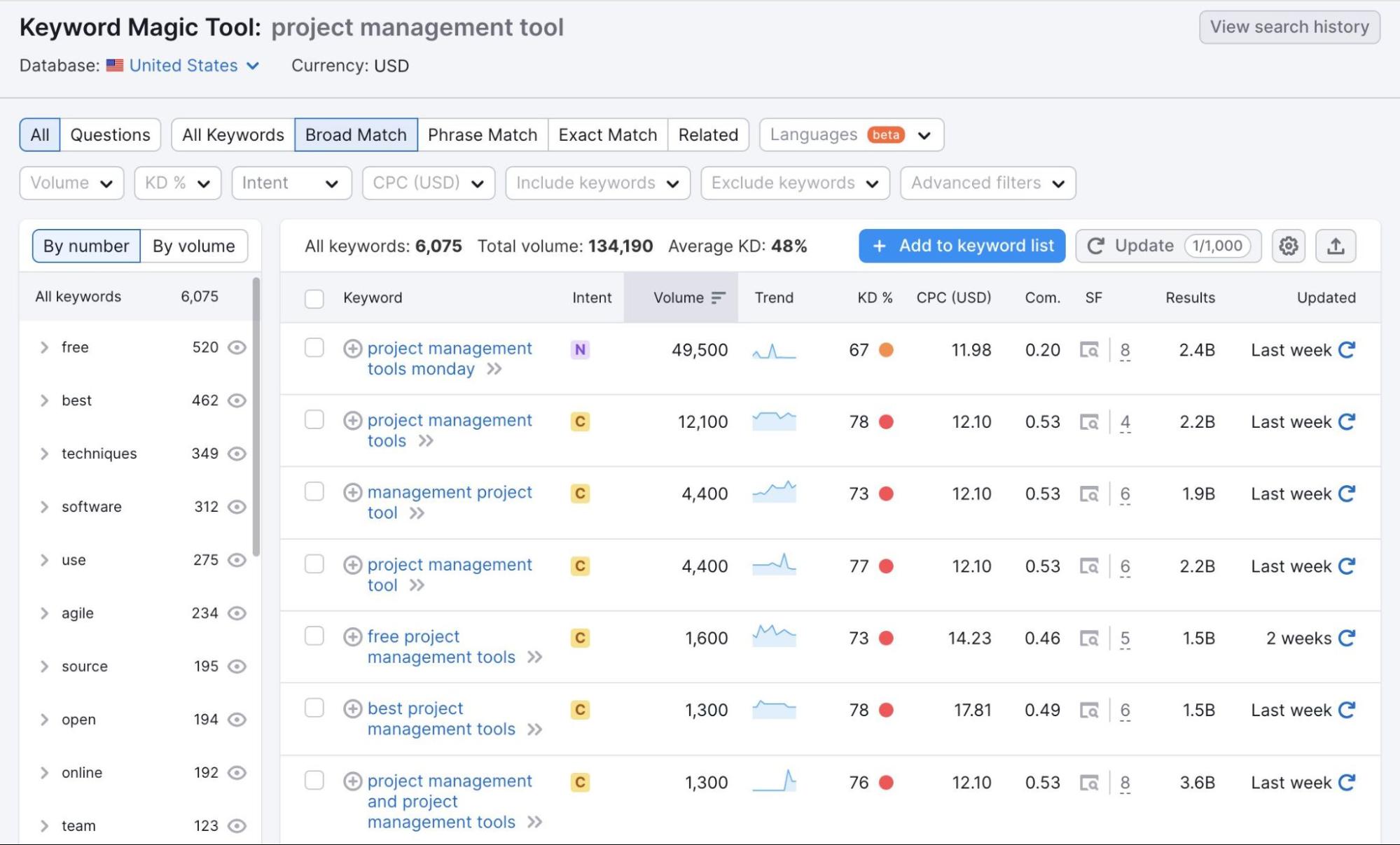
You can then filter keywords by match type.
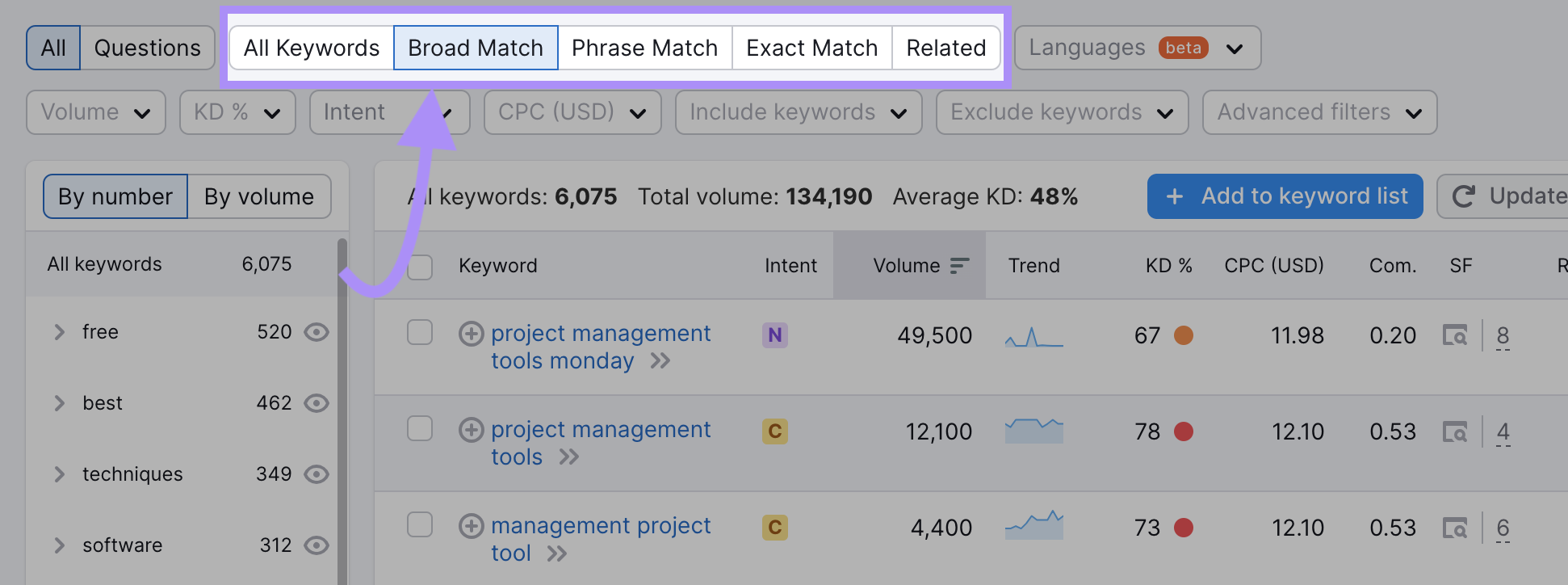
“Broad Match” is the default and offers a wide range of keyword variations.
“Exact Match” will provide phrases with your keyword exactly as typed.
“Phrase Match” will show phrases with your keyword in the specified order.
“Related Match” will display terms that are semantically related to your keyword.
Browse through the extensive list of keywords that the tool generates. You’ll see metrics such as search volume, keyword difficulty, and cost per click (CPC):

And you can also use filters to narrow down your results and find the best keywords for your SEO strategy.
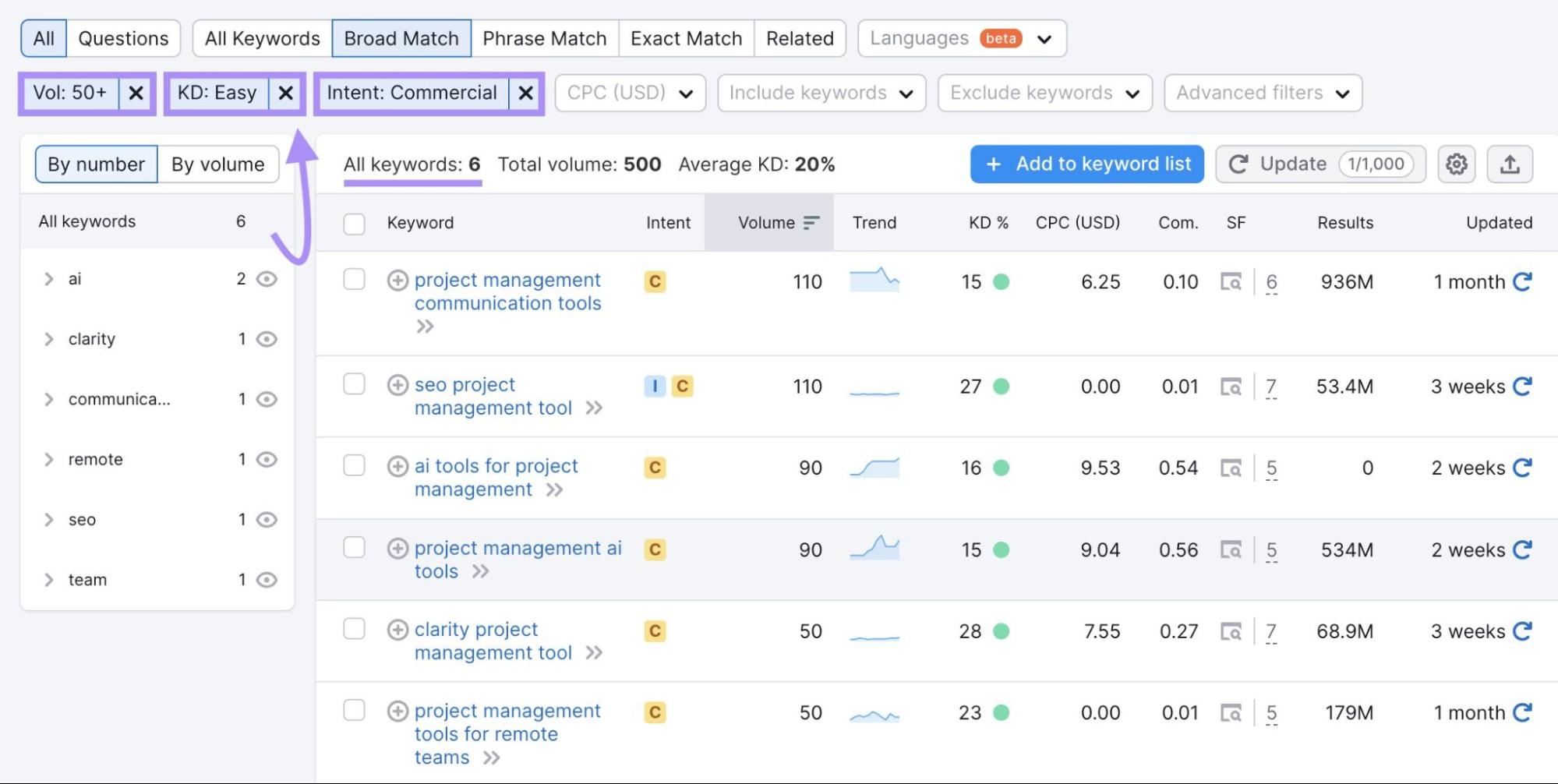
Once you have a list of potential keywords, strategically incorporate them into your website’s content, meta tags, and other SEO-related elements. This will help optimize your SEO strategy and improve your website’s visibility.
6. Influencer Marketing Strategy
An influencer marketing strategy involves partnering with influential individuals or brands to promote your products or services.
For example, the collaboration between McDonald’s and rap artist Travis Scott, known as “The Travis Scott Meal.”
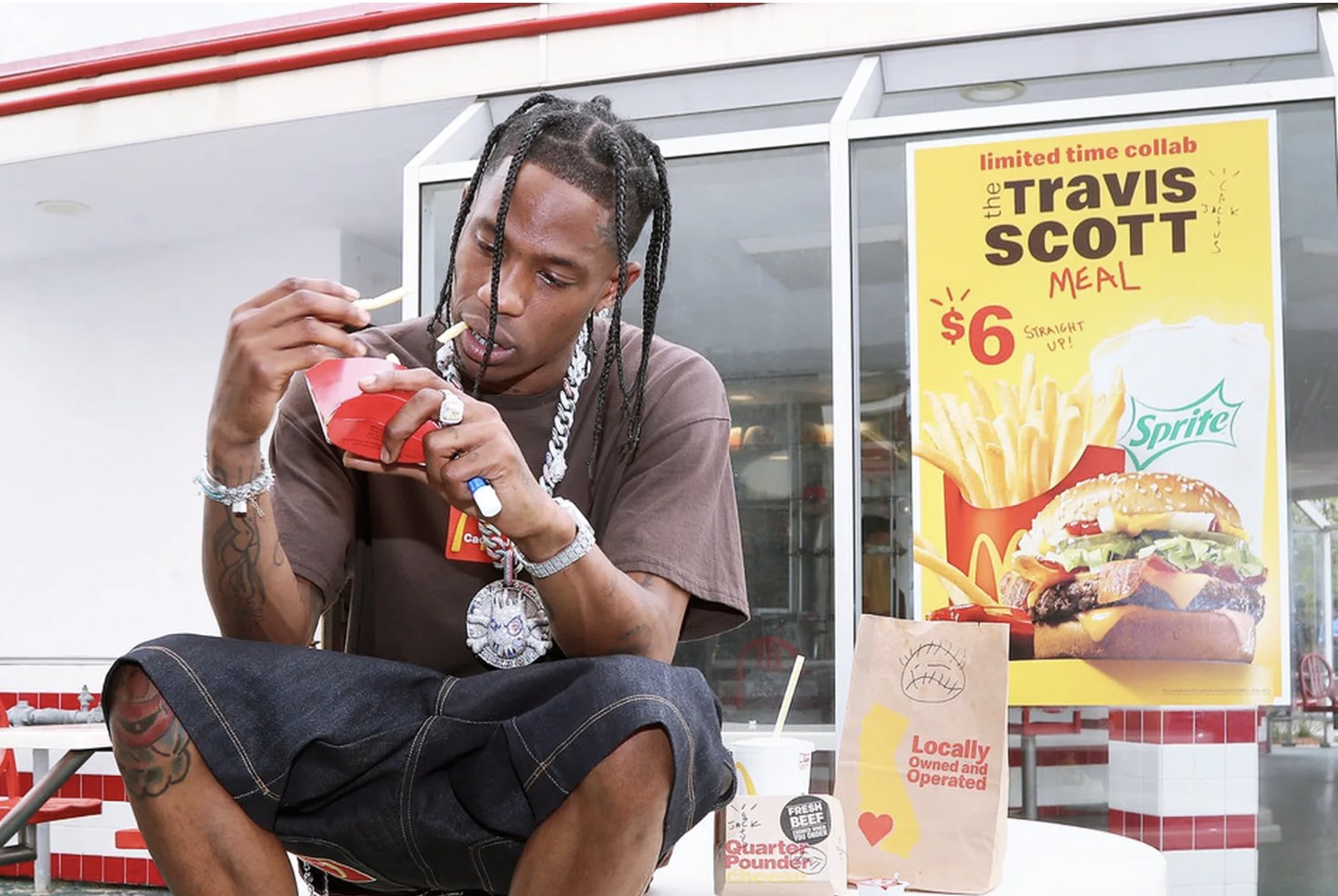
It resulted in a significant increase in sales. This partnership showcased the effectiveness of combining influencer appeal with an established brand.
Influencer marketing can help you tap into new audiences, build trust, and showcase your products or services in a more relatable way. By leveraging the influencer’s existing following.
They can create compelling content for you, such as sponsored posts or product reviews. Which they share on their active platforms like social media channels, blogs, or YouTube.
Picking the right influencer to collaborate with involves taking into account their niche, follower demographics, engagement rates, and how well they align with your brand values.
For starting or enhancing your influencer marketing campaign, you can leverage a tool like Influencer Analytics.
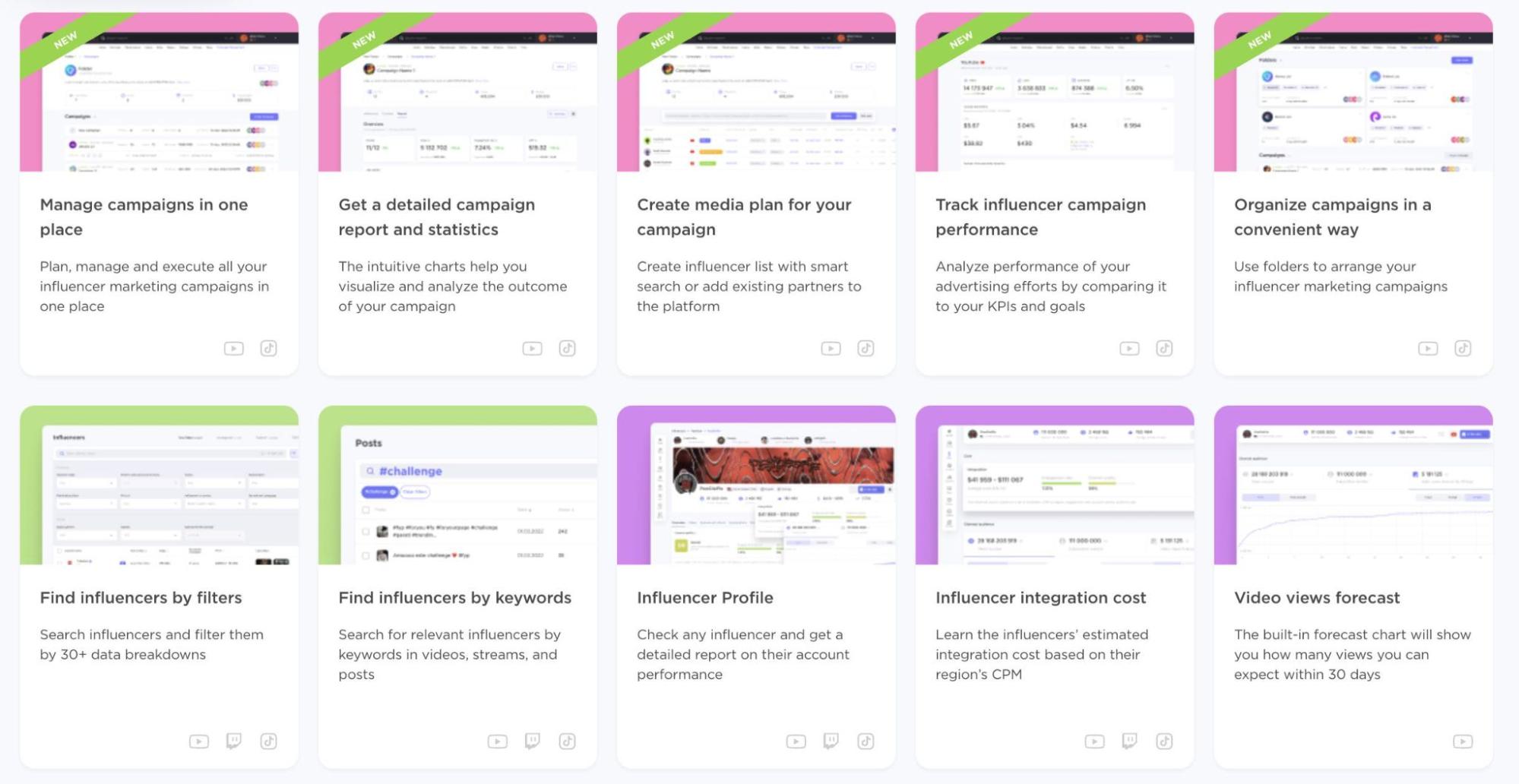
3 Tips for Creating an Effective Marketing Strategy
Once you know which types of marketing strategy you want to leverage, follow these tips to make them even more effective:
1. Understand Your Audience
Understanding your audience means getting to know them better, including learning their unique characteristics, behavior, preferences, and needs.
For a better understanding of your audience, consider:
- Conducting surveys or polls for direct feedback from your target audience
- Using analytics tools to track website traffic and understand user behavior
- Researching and analyzing demographics like age, gender, location, income, education, etc.
- Monitoring social media conversations and engagements about your brand and industry
Tools like Google Analytics, Facebook Insights, and Semrush’s Market Explorer are great for gaining valuable audience insights that can inform your marketing strategy.
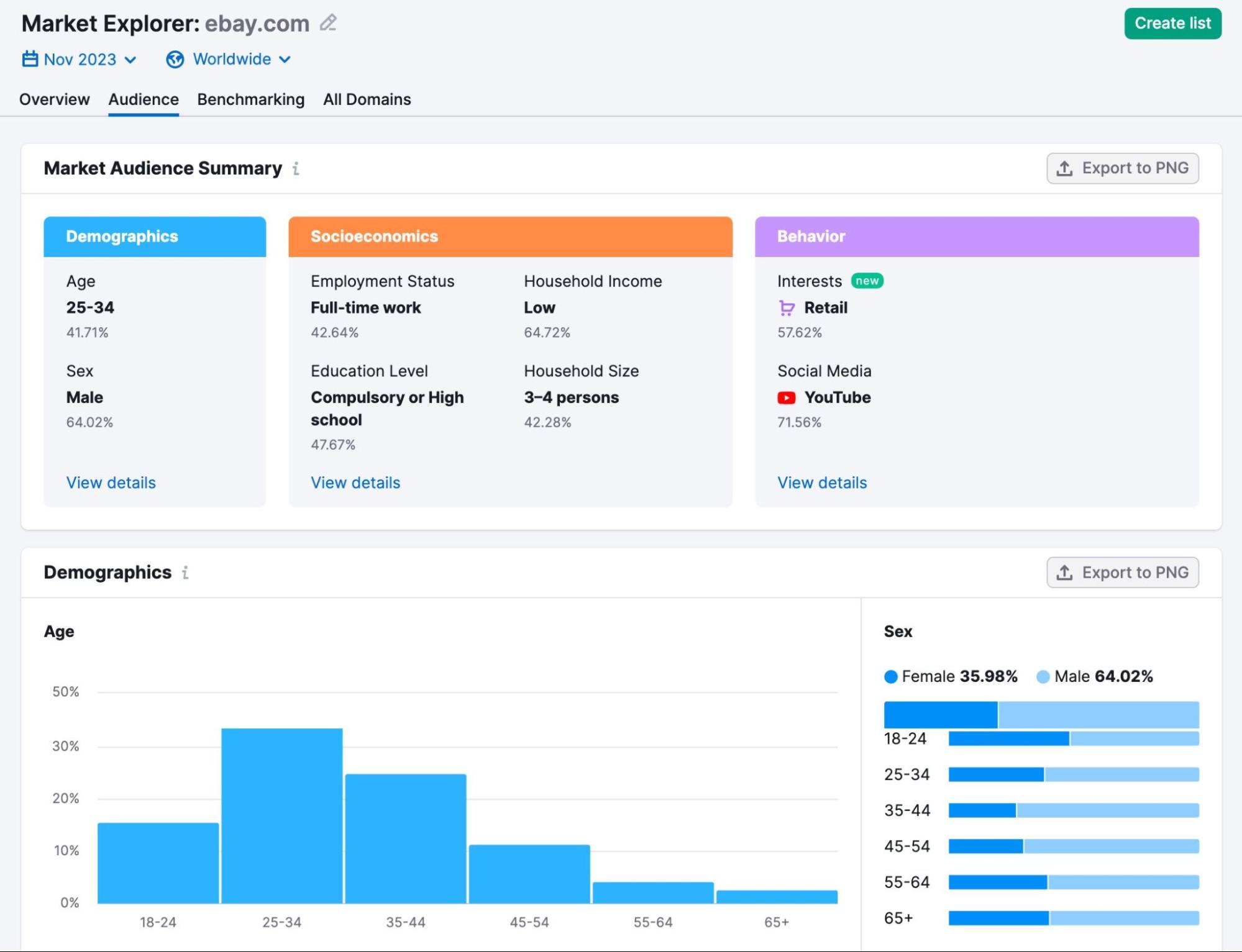
2. Leverage Multichannel Marketing
Multichannel marketing uses various channels (social media, email, SEO, etc.) to engage potential customers. It can help you reach a wider audience and increase conversions.
Here are some tips for crafting a successful multichannel marketing strategy:
- Understand your target audience and their preferred channels
- Customize messages for each channel, considering its unique characteristics
- Continuously monitor and analyze results to identify the most effective channels for ROI
3. Create a Content Calendar
A content calendar helps plan and schedule content creation, publication, and distribution.
Here are some tips for creating an effective content calendar:
- Set clear goals and objectives for your content marketing efforts
- Identify key themes and topics to focus on
- Determine the frequency and timing of content publication
Level Up Your Marketing Strategy with Semrush
In today’s highly competitive business landscape, a robust marketing strategy is no longer optional. It’s a necessity.
Understanding your audience and leveraging multiple marketing channels are critical for reaching a wider audience and increasing conversion rates.
By leveraging Semrush’s marketing tools, like Market Explorer and the Keyword Magic Tool, you can gain valuable insights on your audience. And create well-rounded marketing campaigns that drive meaningful growth for your business.
Source link : Semrush.com
